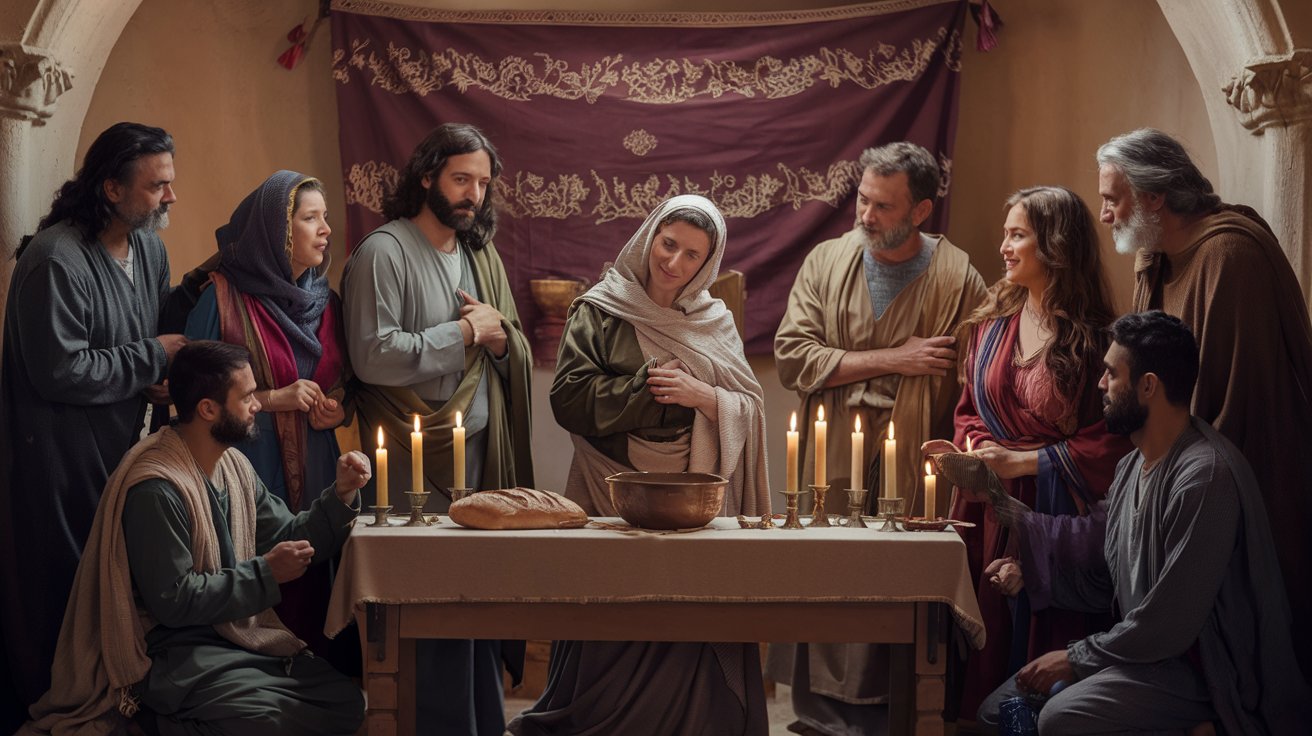
Have you ever heard of the Desposyni? These intriguing figures claimed to be direct descendants of Jesus Christ. Emerging in the 2nd century AD, the term "Desposyni" comes from the Greek word "desposynos," meaning "of the master" or "of the lord." Their beliefs and practices often clashed with mainstream Christianity, leading to conflicts and persecution. They were influenced by Gnostic movements and Jewish mysticism, which set them apart from other early Christian groups. Despite facing suppression, the legacy of the Desposyni continues to captivate scholars and spiritual seekers today. Let's dive into 20 key facts about these fascinating individuals.
Who Were the Desposyni?
The Desposyni were a fascinating group in early Christianity. They claimed to be direct descendants of Jesus Christ, which made them unique and controversial. Let's dive into some intriguing facts about them.
-
Origins: The term "Desposyni" comes from the Greek word "desposynos," meaning "of the master" or "of the lord." This reflects their claimed lineage from Jesus Christ.
-
Early Christianity: The concept of the Desposyni emerged in the 2nd century AD, a time when Christianity was still forming and different groups had their own interpretations of Jesus' teachings.
-
Gnostic Influence: The Desposyni were often linked with Gnostic movements, which emphasized spiritual knowledge and the existence of a divine spark within each person.
Unique Beliefs and Practices
The Desposyni had distinct beliefs and practices that set them apart from mainstream Christianity. Their rituals and teachings were influenced by various traditions.
-
Religious Practices: They likely practiced a form of Christianity that included elements of Jewish mysticism and other esoteric traditions.
-
Leadership: Leaders of the Desposyni claimed to be descendants of Jesus, possibly seen as spiritual guides with divine authority.
-
Geographical Distribution: Desposyni communities were spread across various regions, including Asia Minor, Egypt, and possibly the Roman Empire.
Conflicts and Persecution
Their unique claims and practices often led to conflicts with mainstream Christianity and Roman authorities, resulting in persecution.
-
Conflict with Mainstream Christianity: Their claims and practices often put them at odds with mainstream Christian beliefs, leading to debates and conflicts.
-
Persecution: Due to their controversial beliefs, the Desposyni faced persecution from both mainstream Christians and Roman authorities, which likely suppressed their teachings.
Historical Records and Critiques
Much of what we know about the Desposyni comes from early Christian texts and critiques by prominent theologians.
-
Historical Records: Information about the Desposyni is limited and fragmented, primarily found in early Christian texts like those of Irenaeus and Tertullian.
-
Irenaeus' Critique: Irenaeus, an early Christian theologian, wrote extensively against the Desposyni, labeling them as heretics who distorted Jesus' teachings.
-
Tertullian's Views: Tertullian also criticized the Desposyni, viewing them as a threat to church unity and arguing that their beliefs contradicted orthodox Christianity.
Gnostic Texts and Symbolism
Some Gnostic texts reference the Desposyni, providing insights into their beliefs and practices.
-
Gnostic Texts: Texts like the Gospel of Philip mention the Desposyni, often presenting a mystical and symbolic view of Jesus and his relationship with his disciples.
-
Symbolism and Rituals: The Desposyni likely used unique symbols and rituals, such as the Ichthys (the fish), a common early Christian symbol.
Esoteric Knowledge and Community Structure
The Desposyni were believed to possess secret knowledge and had a structured community with its own hierarchy and rituals.
-
Esoteric Knowledge: They were thought to have esoteric knowledge not available to the general public, including secret teachings and rituals passed down through generations.
-
Community Structure: Their community likely had a structured hierarchy and rituals, similar to other early Christian groups like the Ebionites or Nazarenes.
Influence of Jewish Mysticism and Eschatological Beliefs
Their beliefs and practices were significantly influenced by Jewish mysticism and apocalyptic traditions.
-
Relationship with Jewish Mysticism: The Desposyni's beliefs showed a strong influence from Jewish mysticism, viewing Jesus as a messianic figure with both human and divine qualities.
-
Eschatological Beliefs: They likely held beliefs about the end of the world and Jesus' return, influenced by Jewish apocalyptic traditions and the Book of Revelation.
Controversy Over Jesus' Nature and Modern Legacy
Their views on Jesus' nature were controversial, and their legacy continues to intrigue scholars and spiritual seekers.
-
Controversy Over Jesus' Nature: The Desposyni might have seen Jesus as a divine being who was both human and divine, conflicting with the orthodox view of Jesus as fully human and fully divine.
-
Legacy in Modern Times: Despite suppression, the Desposyni's legacy can be seen in various modern spiritual movements, with some groups still claiming direct lineage from Jesus.
-
Historical Significance: The Desposyni represent a fascinating chapter in early Christianity, highlighting the diversity and complexity of early Christian beliefs and practices.
The Legacy of the Desposyni
The Desposyni, claiming descent from Jesus Christ, offer a fascinating glimpse into early Christianity's diversity. Emerging in the 2nd century AD, they were influenced by Gnostic movements and Jewish mysticism. Their unique practices and beliefs often clashed with mainstream Christianity, leading to conflicts and persecution. Despite limited historical records, writings from Irenaeus and Tertullian provide insights into their controversial claims. The Desposyni's esoteric knowledge, rituals, and community structure set them apart. Though suppressed, their legacy persists in modern spiritual movements. They highlight the complexity of early Christian beliefs and the challenges faced by groups outside the emerging orthodoxy. Understanding the Desposyni enriches our knowledge of Christianity's formative years and the diverse interpretations of Jesus' teachings.
Was this page helpful?
Our commitment to delivering trustworthy and engaging content is at the heart of what we do. Each fact on our site is contributed by real users like you, bringing a wealth of diverse insights and information. To ensure the highest standards of accuracy and reliability, our dedicated editors meticulously review each submission. This process guarantees that the facts we share are not only fascinating but also credible. Trust in our commitment to quality and authenticity as you explore and learn with us.


